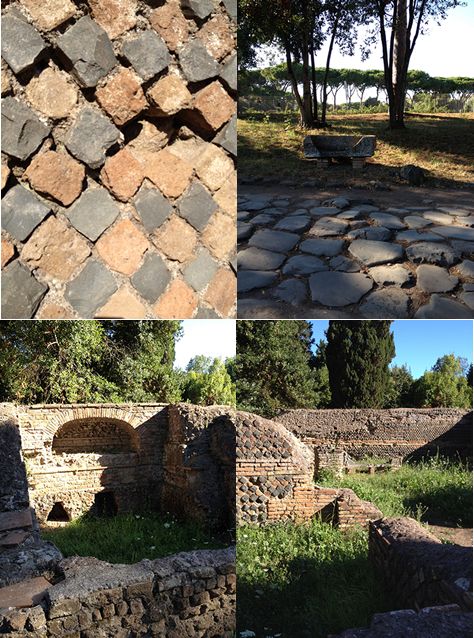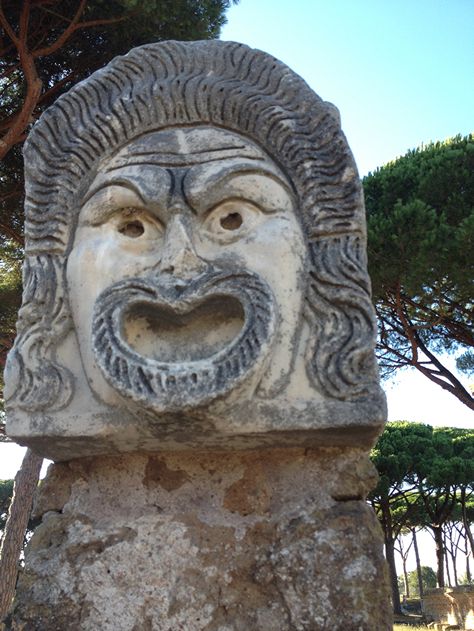
ROME - Ostia Antica (Rome, Italy) 41° 75' 81.509" N - 12° 29' 11.73" E
There is a fort in a rectangular shape, with gates at the southern, northern, western and eastern points, plus two roads which converge at the Forum. As you stroll along the main road, Decumanus Maximus, you can see constructions dating from the days of the Republic, many centuries before the birth of Christ, and the Empire, after Christ.
They can be identified by their differing levels. As the centuries passed by, the ground level in Ostia rose higher and the roads became more elevated. As you walk down, you pass further back in time to the days before Christ.
Also on the main road, you can see the enormous theatre, or teatro. This is one of the world’s oldest historic brick theatres, and it still plays host to concerts to this day. In the old days, the three front rows of marble steps, closest to the orchestra, were reserved for the most important people.
Ahead of the theatre you will see the grand Square of the Guilds. This was formerly the thriving centre of the Roman import and export business, and there were over 60 offices belonging to traders and ship owners here. Along the pavements, there are mosaics dating from the second century AD, advertising the goods and services of the shops. An elephant mosaic identifies an office belonging to African traders, while a lighthouse is a symbol of Ostia as a port town. Visitors can have fun walking around the whole square and trying to guess from these signs what was once offered in each shop.
The social hub of the city was the Forum Baths, an enormous complex which was subsidised by the government of the time. The pools were surrounded by marble steps where people would lounge and socialise. Olive oil was used for washing in place of soap, so the servants at the baths would have to skim the water regularly. As you gaze over the Baths of Neptune, you will see a beautiful mosaic depicting the god Neptune astride four horses, riding through turbulent waves.
On Via Casa di Diana you will see the House of Diana. This is an amazing example of the multiple-storey tenements where lower middle class citizens would live, known as insulae.
There is also an inn on this street named Insula of the Thermopolium. Take a look into the bar of this tavern, and you will see many interesting details such as the shelves which were once used to store drinks and food, remnants of old wall paintings, and a small sink.
 May 16, 2017
Rome
May 16, 2017
Rome

